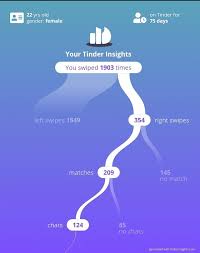
Introduction
Tinder, launched in 2012, has revolutionised the landscape of online dating, becoming synonymous with casual dating. As one of the world’s most popular dating apps, it allows users to swipe right to like or left to pass on potential matches. Its significance lies not only in the large number of users it attracts but also in how it has shaped dating behaviours and social interactions.
The Rise of Tinder
Since its inception, Tinder has gained immense traction, particularly among millennials and Generation Z. The app’s user-friendly interface and quick matching system have contributed to its rapid prominence, with reports indicating that over 66 million users are active as of 2023. This increase has spurred a cultural shift in how people approach dating, shifting from traditional methods to technology-driven interactions.
Tinder’s Impact on Relationships
Tinder’s influence on dating culture extends far beyond simple matches. Research indicates that younger generations show a preference for casual relationships facilitated by apps. According to a study by the Pew Research Centre, nearly 30% of Americans have used a dating app, showcasing a significant change in attitudes towards online dating. This shift has been particularly relevant in the context of the COVID-19 pandemic, when in-person interactions were limited, causing a surge in dating app usage. Tinder responded with features like video chat to adapt to the changing landscape.
Challenges and Critiques
Despite its success, Tinder has faced challenges and criticisms. Many users cite experiences of ghosting, superficial interactions, and safety concerns as significant drawbacks. Additionally, the abundance of options often leads to decision fatigue, where users struggle to commit to a relationship due to the fear of missing out on potentially better matches. Some experts argue that this phenomenon may lead to less meaningful connections.
The Future of Tinder and Online Dating
Looking ahead, Tinder continues to evolve in response to user feedback and societal trends. The company has announced plans to enhance safety features, including video verification to reduce catfishing. With the rise of artificial intelligence in dating apps, future developments may see more personalised matching algorithms, further reshaping how people connect.
Conclusion
Tinder’s impact on modern dating culture is profound, streamlining the process of finding companionship while simultaneously introducing new challenges. With its ongoing adaptations, it remains at the forefront of the dating revolution, prompting both users and critics to reconsider what it means to connect in the digital age. As we move forward, understanding these dynamics will be key for individuals navigating the dating world.
You may also like

The Impact of White Lotus on Environmental Tourism

The Rise of Gen Z: Characteristics and Influence on Society
